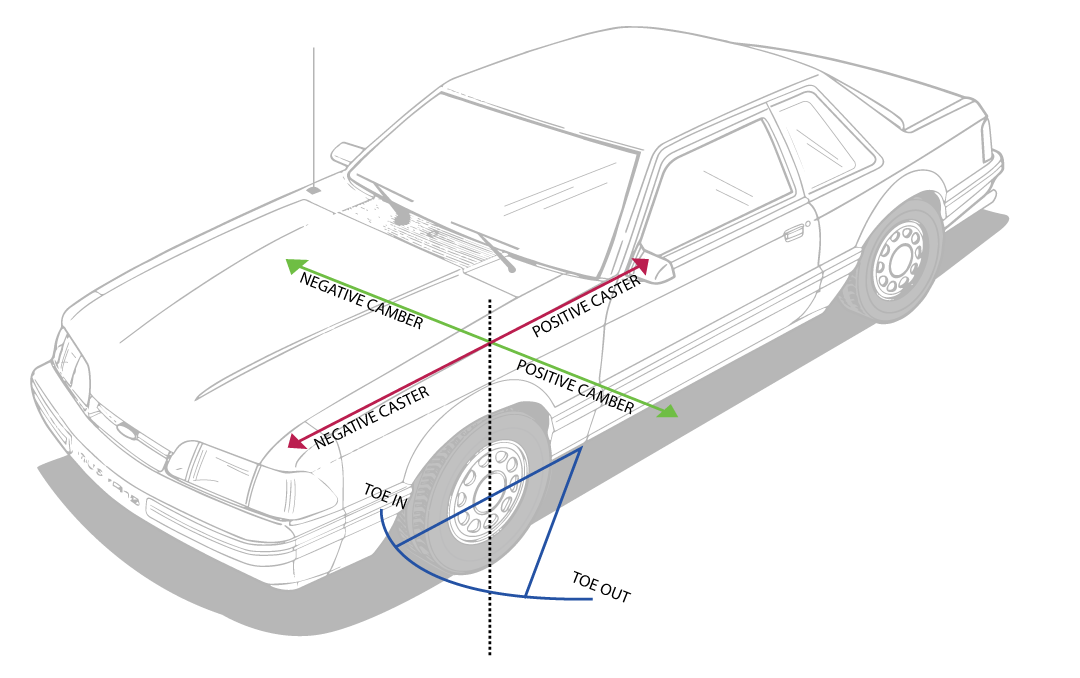Following up on the GT-40 intake article, this is all about the infamous GT-40 cylinder heads. Yes, some fox body owners out there are still “striking gold” in salvage yards when they find the good ol’ GT-40 heads, and they are still good value-for-money and will help you build a cheap 300HP 5.0L but do you know the history of these things?
History of the GT-40 Cylinder Heads
Started in the late 80’s the GT-40 heads were the result of not only the Ford Engine Group, but also involved the Marine Group, Advanced Engineering Group and SVO. They had target airflow numbers matching or exceeding the 1968 GT40 race head which had 1.90/1.60 inch valves. The original GT40 race heads also flowed 195cfm on the intake side and 152cfm on the exhaust side at .500 inch lift.
Ford hired Roush Industries to help out and rework the then-current 5.0 HO head casting to meet their airflow targets. It was a success because the modified HO head castings actually flowed better than the ’68 GT40 race heads! So the work began to put the new GT-40 heads into production.
The new GT-40 heads first appeared in the 1991 SVO parts catalogue. The 1993 to 1995 Cobra Mustangs received the new GT-40 heads (distinguished with the 3 vertical ribs cast into each end of the heads). This version was deck-face-machined further than the catalogue heads and machined for addition push-rod clearance. They were also fitted on the 351w (5.8L) V8 in the Ford Lightning from 1993 to 1995. The GT-40 heads average a 30HP increase alone, over the stock HO heads.
The GT-40 heads continued within the Ford Explorer despite the Mustangs receiving modular engines. The 1996-97 models got the normal GT-40 heads while the 1998-2000 models got the revised versions, or the GT-40P.
Cobra GT-40 Part Numbers:
- 1993 Cobra – F3ZZ
- 1994-95 Cobra – F4ZZ-6049-A (updated under-valve pocket area)
- 1996-97 Explorer – F1ZE-AA
- SVO catalogue – M-6049-L30
- 1998-00 GT-40P Explorer – F77E-AA
GT-40 cylinder Head Airflow:
| Valve Lift | Intake CFM | Exhaust CFM |
| .400 | 186 | 147 |
| .450 | 191 | 151 |
| .500 | 195 | 152 |
Stock E7 HO cylinder Head Airflow:
| Valve Lift | Intake CFM | Exhaust CFM |
| .300 | 142 | 107 |
| .400 | 146 | 118 |
| .500 | 150 | 123 |
Edelbrock Performer RPM cylinder Head Airflow:
| Valve Lift | Intake CFM | Exhaust CFM |
| 300 | 185 | 131 |
| 400 | 214 | 156 |
| 500 | 223 | 168 |
GT-40P?
The later pushrod Explorers got a revised GT-40 head, they are easily identifiable as they don’t have the 3 ribs on each end and uses an external EGR system. The GT-40P heads have different spark plug placement and will not clear all headers (or at least play around with 90 degree spark plug boots). The GT-40Ps will give a jump in compression ratio with their smaller combustion chambers but comes with smaller exhaust valves than the earlier GT-40 heads (1.46 versus 1.54”).
Headers known to clear the GT-40P heads:
- Ford Motorsports M-9430-P50 (no longer making these)
- BBK 1512
- BBK 1515
- Mac Long-tubes TF92016
If you do buy some used GT-40 heads
Make sure to replace the valve springs with something like Crane’s 44308-1 as the stock springs on most GT-40 heads won’t do you much good (especially the GT-40P). It’s also a good idea to have the heads checked at a machine shop – which will add to the cost of your GT-40 head install (at least to do it right) and you should also check out other options such as used aluminium heads which will not only give more performance but will save some weight (up to 50 pounds total, up front where it counts).
Also these iron GT-40 heads will be pedestal mounted rockers, if you plan on upgrading the rockers you will require a stud conversion kit or buy pedestal mount rockers which you won’t be able to use down the road if you buy aftermarket heads. Just make sure to tally all the “hidden costs” when it comes to used heads like these and be realistic with your goals. If you plan on a 400HP N/A 5.0, maybe your best bet is to wait and save up some more pennies to start with better heads from the get-go. It’s easier on the wallet to do things once 🙂
If you liked the GT-40 heads article, check out the “the complate GT40 intake” article >





